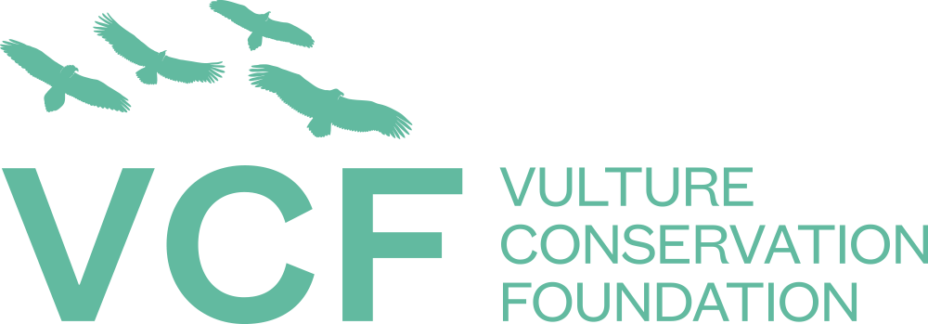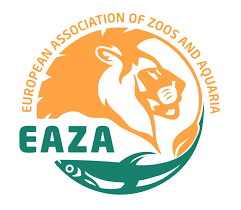
Unfortunately, the Bearded Vulture Donna Elvira reintroduced in the Swiss Alps collided with a cable transport and suffered severe injuries. Thanks to her GPS transmitter, she was rescued in time, but full recovery is still not guaranteed.
An important part of a reintroduction project

The female Donna Elvira hatched in the Bearded Vulture captive breeding centre of Guadalentín within the Bearded Vulture Captive Breeding Network, coordinated by us at the Vulture Conservation Foundation (VCF) on behalf of EAZA’s EEP (Bearded Vulture EEP). Her ‘rarer’ genetic background made her ideal for the reintroduction project in the Alps, where genetic diversity is still too low to avoid inbreeding in the long term, so releases are ongoing. Stiftung Pro Bartgeier (SPB) released Donna Elvira alongside BelArosa in late June 2021 at the Swiss Wildlife Reserve Huetstock near Melchsee-Frutt, marking the 30th anniversary of the first Bearded Vulture releases in the Swiss Alps.
Returning to the release area after wandering travels

Following her release, Donna Elvira spent several months in Switzerland in the Bernese Oberland, Glarus, Valais and finally in the Domodossola region. She then returned to the reintroduction region in central Switzerland at the end of 2021.
Noticing suspicious behaviour
During the daily check of the GPS data, the monitoring team noticed that Donna Elvira conducted bizarre flight movements and subsequently spent the night in a meadow in the community of Kerns. This behaviour is unusual for the Bearded Vulture and rightfully raised concern.
Mobilising the rescue mission

Donna Elvira is sitting in the snow when rescuers find her. The cable is difficult to see © Franz Röthlin 
Game warden Franz Röthlin with the rescued Donna Elvira in difficult terrain © Daniel Burch 
In order to rescue Donna Elvira as quickly as possible and bring her to the veterinary clinic, a quad was also used © Daniel Burch
The close monitoring of the vulture proved essential for a timely rescue. After realising something was wrong, the SPB team quickly informed the local game warden, Franz Röthlin. He and his colleague Daniel Burch managed to rescue Donna Elvira fast and thus prevent her from succumbing to her injuries.
Entering the rehabilitation facility
Following her rescue, Donna Elvira entered the Nature Reserve and Wildlife Park Goldau for rehabilitation. There, experts determined she collided with a transport cable and broke several bones. The exact circumstances that led to this incident are still under investigation.

She is currently receiving the proper care, but it’s unclear whether the young vulture will fully recover from these injuries. The first week of treatment seems promising as her internal injuries are slowly healing and she can already feed herself. But it will take several weeks until we can evaluate if she will be able to fly properly again. If she does not seem fit for release into the wild after her rehabilitation ends, Donna Elvira will join the Bearded Vulture EEP, where she will contribute to the conservation of her own species.
Not the first incident of its kind for the species in the region
Since 2015, the local reintroduction team released thirteen young Bearded Vultures in Central Switzerland. By 2018, Alois, one of the released vultures, collided with a transport cable not far from the reintroduction site. This incident occurred in the canton of Nidwalden and unfortunately ended fatally for Alois.
Collisions: A problem for vulture conservation
The Vulture Multi-species Action Plan (Vulture MsAP), co-developed by the VCF and endorsed by the Convention for Migratory Species (CMS), concluded that electricity infrastructure, particularly electrocution and collision, are severe but under-estimated threats to vultures. Vultures are often unable to distinguish powerlines or cables against the background of the natural vegetation, causing mostly fatal collisions. The deaths from such threats are sadly underreported – in Spain, for example, only 10% of the mortality caused by collision with energy infrastructure is recorded. As with most human-caused mortalities, these incidents contribute to population declines of protected bird species like the Bearded Vulture, so it’s urgent to reduce and eliminate potential threats.
The VCF is involved in different projects to mitigate the threat of collision. These include our own LIFE-funded projects such as Vultures Back to LIFE, LIFE GypConnect and LIFE with Vultures, among others, that are working to protect vultures from the risks posed by the electricity infrastructure. One way to do so is by adding high visibility reflectors and spirals to cables to help improve the visibility of power lines and reduce the risk of collision. The MAVA Foundation is also funding projects across the eastern Mediterranean flyway to minimise the danger of electrocution and collision.
Source: Stiftung Pro Bartgeier








